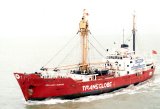
Sir Ranulph Fiennes has been to the most dangerous and inaccessible places on earth; has nearly died on several occasions; lost some of his fingers to frostbite; raised millions of pounds for charity; helped discover the lost city of Ubar in Oman; attempted to walk solo to the South Pole; was the first man to reach both poles by surface travel; was the first to cross the Antarctic Continent unsupported; climbed Mount Everest; climbed the North Face of the Eiger and ran 7 marathons in 7 days. What a man!!
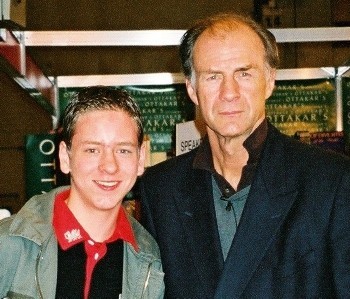
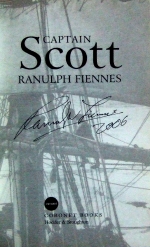
I met Sir Ranulph Fiennes at the NEC's Outdoor Show in March 2006. He signed my programme, my autograph book and my copy of his book Captain Scott. He then gave an enthralling talk to a packed audience about many of his adventures, how he was thrown out of the SAS, how he cut off his own fingers, and what it was like to run 7 marathons in 7 days,
Sir Ranulph Fiennes
Dr Mike Stroud & Sir Ranulph Fiennes
MV Benjamin Bowring
Sir Ranulph Fiennes
Ranulph Fiennes is the author of 17 books including To the Ends of the Earth (1983) about his Transglobe Expedition; his first autobiography Living Dangerously (1987), and Captain Scott (2003) his account of Robert Falcon Scott's expedition to the South Pole.
In 2005, Fiennes made his first attempt on Everest, reaching to within 500' of the summit before a heart condition stopped him in his tracks. He was back in London two days later for medical checks and he believes that must be the quickest descent of Everest on record!!
The most amazing feat that Fiennes has undertaken is running 7 marathons (nearly 184 miles altogether) in 7 days in 7 different continents, and all this only four months after major heart surgery! The challenge, which took place from 26th October - 1st November 2003, was to raise
2000 saw Fiennes undertake a solo trek to the North Pole but it ended in disaster as all his sledges fell through the ice. His fingers became badly frostbitten when pulling them out and he was forced to abandon the attempt. When he got back home, he waited for the healthy tissue to grow in his fingers, but the dying tips of them became so painful that he cut them off himself with an electric saw!
In 1993 Fiennes, along with nutrition expert Dr Mike Stroud, tried to cross Antarctica alone. After 3 months they could continue no longer as they had no food, were both severely frostbitten and had to be rescued.
Ranulph Fiennes is best known as an adventurer, undertaking the most extreme expeditions. In 1969, he led an expedition up the White Nile in a hovercraft, and the following year he scaled a glacier in Norway.
In 1970, Fiennes managed to get onto the shortlist to replace George Lazenby as James Bond but when he saw Cubby Broccoli, he was told that his hands were too big and he had a 'face like a farmer'! His second cousins Ralph Fiennes and Joseph Fiennes have, however, both gone on to become famous actors.
Young Adventurer Sir Ranulph Fiennes
The 1979 Transglobe Expedition
Fiennes was something of a rebel and landed himself in court for blowing up part of the set that had been built in Castle Combe in Dorset, for the film Doctor Dolittle. An ugly concrete
Ranulph's mother took the family to South Africa and he grew up there before returning to England in 1956 to attend Eton School. From Eton, he joined the army, and served in the same regiment as his father, The Royal Scots Greys. He later moved to the SAS as a demolitions expert and was, at the time, the youngest captain in the British Army.
Ranulph Fiennes was made an OBE in 1993 "for human endeavour and charitable services".
Before Ginny and Ranulph Fiennes had, for many years, lived on a farm on Exmoor where they kept several hundred rare Aberdeen Angus cattle and black Welsh mountain sheep. After Ginny died, Feinnes undertook a busy lecture tour during which he met his 2nd wife Louise and the couple now have a daughter.
Sir Ranulph Twistleton-Wykham-Fiennes was born in Windsor in March 1944, and he inherited the title of 3rd Baronet after the death of his father, the 2nd Baronet, who was killed in action at Monte Cassino. With such a long name, it isn't surprising that he is usually just called Ranulph (or Ran) Fiennes. It is worth noting that Ranulph Fiennes has never been knighted by the Queen but is styled 'Sir' because he is a Baronet. A baronetcy is not considered as an order of knighthood, but it does rank higher than all other knighthoods except the Garter and the Thistle.
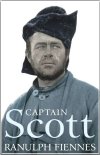
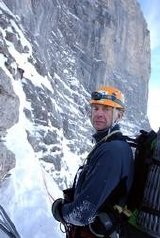
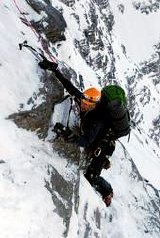
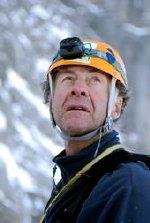


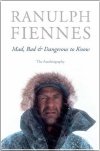
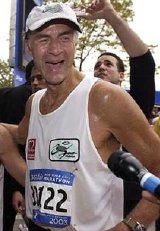
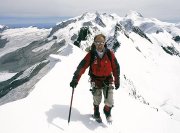
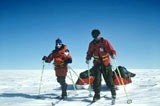
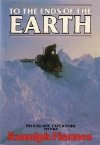
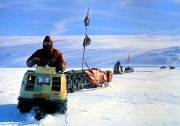
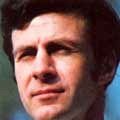
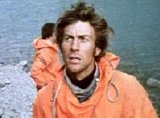
Sir Ranulph Fiennes
the world's greatest living explorer
dam had been constructed for the film, but he strongly objected to it spoiling the very pretty village. For this act he received a very hefty fine and was thrown out of the SAS.
But it was in 1979 that he achieved world-wide fame with his Transglobe Expedition, journeying 52,000 miles circumnavigating the world via both poles, using only surface transport. Fiennes' wife Ginny thought up the idea and it took seven years of planning before the expedition set out from Greenwich in the Benjamin Bowring, a 30 year-old ice-strengthened vessel.
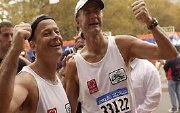
money for the British Heart Foundation. Fiennes was again joined by Mike Stroud and the ran the races in this order: Patagonia (South America); Falkland Islands ('Antarctica'); Sydney (Australasia); Singapore (Asia); London (Europe); Cairo (Africa) and New York (North America).
Two years later, he tackled the North Face of the Eiger and, although severely challenged by his fear of heights, raised over £1.5 million for Cancer Care. The Eiger challenge came about after his first wife, Ginny, died from cancer in 2004, and his mother and sister from the same disease in 2005.
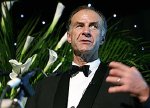
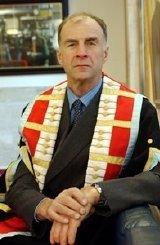
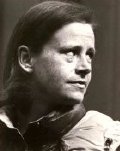
Ginny Fiennes
Sir Ranulph is now very much in demand as a lecturer and after-dinner speaker. He has a dry sense of humour and many hair-raising experiences to talk about!!
His most recent publication is an update of his 1994 autobiography Mad, Bad & Dangerous To Know (2007).
in the Antarctic
Sir Ranulph Fiennes Bt., OBE
Eiger's North Face
Sir Ranulph Fiennes on the Eiger
completing the New York Marathon in 2003
Sir Ranulph Fiennes contemplates the
Sir Ranulph Fiennes at the end of the
New York Marathon
Dr Mike Stroud & Sir Ranulph Fiennes after
Sir Ranulph Fiennes as mountaineer
Sir Ranulph Fiennes signed my book about Captain Scott
Sir Ranulph Fiennes with 2nd wife Louise
after-dinner speaker
Sir Ranulph Fiennes
Sir Ranulph Fiennes in training for his

videos
Sir Ranulph Fiennes
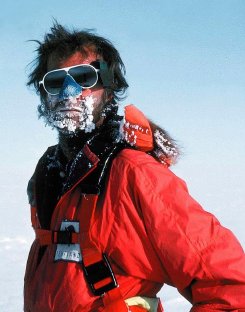
Sir Ranulph Fiennes
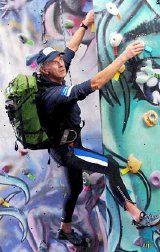
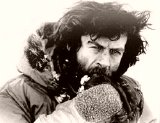
Eiger climb


Sir Ranulph Fiennes
Click on a name below to take you to that page
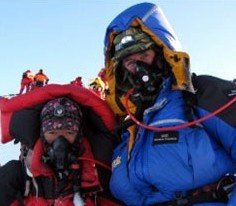
Sir Ranulph Fiennes and Sherpa Lhakpa Thundu at
the summit of Mount Everest on 21st May 2009
On 21st May 2009, Sir Ranulph Fiennes added another great achievement to his long list of adventures - he has reached the summit of Mount Everest, succeeding after his two previous attempts had ended in failure. He has become the first man to cross both the polar ice-caps and climb the world's highest mountain.
"This is the closest you can get to the moon by walking," he said after reaching the summit.
At 65 years old, Sir Ranulph became the oldest Briton and the first British pensioner to climb Everest. He made his momentous climb to raise more funds for the Madame Curie Fund cancer charity.
"This is the closest you can get to the moon by walking," he said after reaching the summit.
At 65 years old, Sir Ranulph became the oldest Briton and the first British pensioner to climb Everest. He made his momentous climb to raise more funds for the Madame Curie Fund cancer charity.